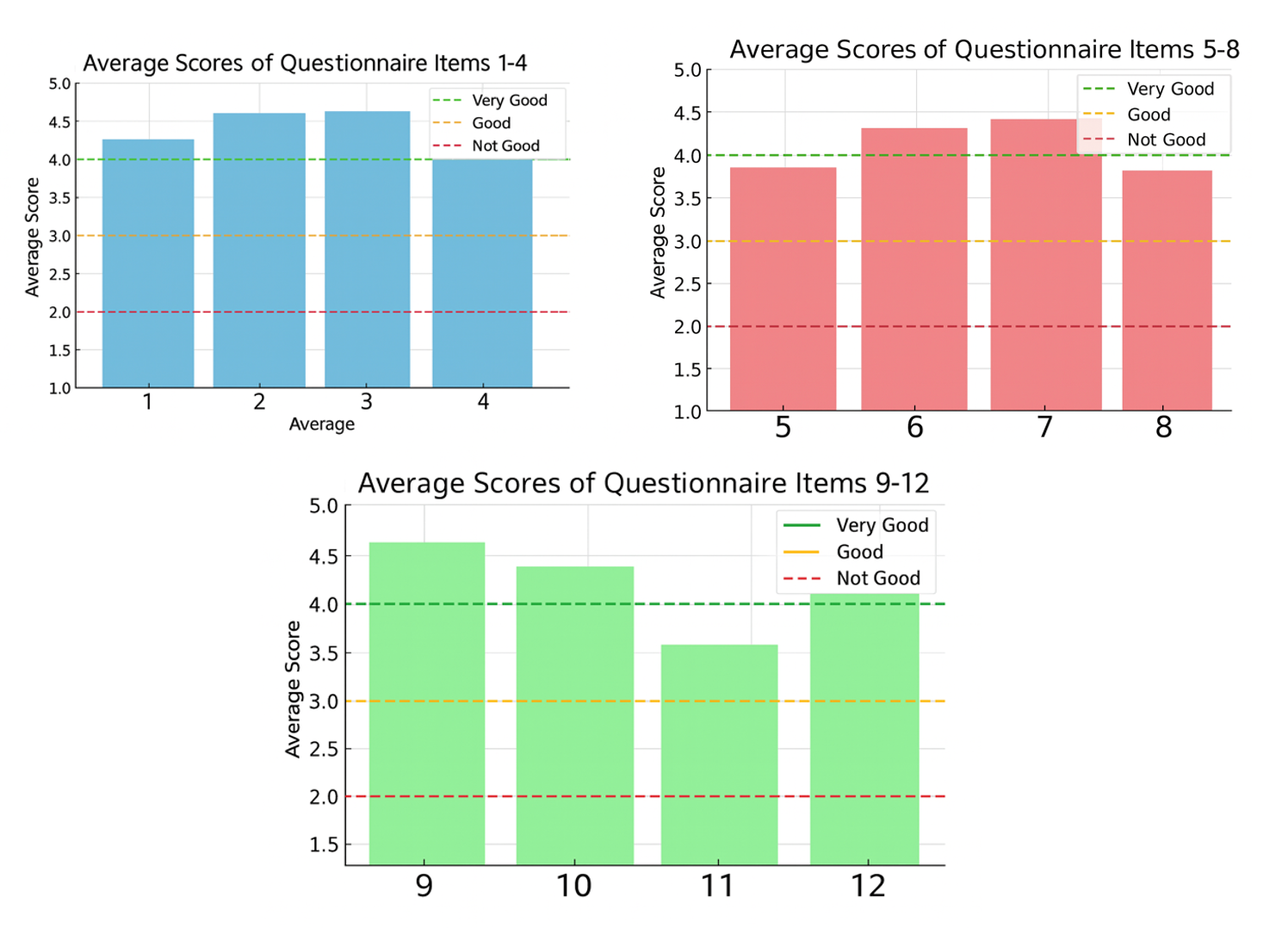Analysis of Students' Social Interaction During Mathematics Learning on Rational Numbers Using Vygotskian Perspectives
https://doi.org/10.51574/kognitif.v5i4.3912
Keywords:
Social Interaction , Mathematics Learning , Vygotsky's Theory , Rational NumbersAbstract
Students’ understanding of mathematical concepts is strongly shaped by the quality of social interaction that occurs during learning. Limited communication between teachers and students or among students can disrupt knowledge construction and weaken learning engagement. This study therefore examines (1) teacher–student social interactions in mathematics learning, (2) student–student social interactions, and (3) teachers’ strategies for adjusting the difficulty level of questions to students’ abilities. The study was conducted at SMP Negeri 7 Kota Jambi in May 2025 using a qualitative descriptive design. Data were collected through observation, questionnaires, interviews, and documentation, and analyzed through data reduction, data display, and conclusion drawing, with credibility ensured through source and technique triangulation. The results indicate that teacher–student interaction was in the excellent category. Teachers acted as More Knowledgeable Others by providing explanations, guiding questions, and scaffolding aligned with the Zone of Proximal Development. Student–student interaction was also excellent, as reflected in group discussions and the exchange of problem-solving strategies, although participation remained uneven. Teachers’ strategies in adjusting question difficulty were likewise excellent. These results affirm that social interaction-based learning grounded in Vygotskian theory supports students’ progression from actual to potential competence through collaboration and targeted instructional support.
Downloads
References
Achmetli, K., Schukajlow, S., & Rakoczy, K. (2019). Multiple Solutions for Real-World Problems, Experience of Competence and Students’ Procedural and Conceptual Knowledge. International Journal of Science and Mathematics Education, 17(8), 1605–1625. https://doi.org/10.1007/s10763-018-9936-5
Álvarez, J. A. M., Arnold, E. G., Burroughs, E. A., Fulton, E. W., & Kercher, A. (2020). The design of tasks that address applications to teaching secondary mathematics for use in undergraduate mathematics courses. Journal of Mathematical Behavior, 60(September). https://doi.org/10.1016/j.jmathb.2020.100814
Arican, M. (2019). Preservice Mathematics Teachers’ Understanding of and Abilities to Differentiate Proportional Relationships from Nonproportional Relationships. International Journal of Science and Mathematics Education, 17(7), 1423–1443. https://doi.org/10.1007/s10763-018-9931-x
Ayalon, M., & Wilkie, K. (2020). Students’ identification and expression of relations between variables in linear functions tasks in three curriculum contexts. Mathematical Thinking and Learning, 22(1), 1–22. https://doi.org/10.1080/10986065.2019.1619221
Freeman, B., Higgins, K. N., & Horney, M. (2020). How Students Communicate Mathematical Ideas: An Examination of Multimodal Writing Using Digital Technologies. Contemporary Educational Technology, 7(4), 281–313. https://doi.org/10.30935/cedtech/6178
Huang, X., Huang, R., & Bosch, M. (2021). Analyzing a teacher’s learning through cross-cultural collaboration: a praxeological perspective of mathematical knowledge for teaching. Educational Studies in Mathematics, 107(3), 427–446. https://doi.org/10.1007/s10649-021-10057-w
Ivars, P., Fernández, C., & Llinares, S. (2020). A Learning Trajectory as a Scaffold for Pre-service Teachers’ Noticing of Students’ Mathematical Understanding. International Journal of Science and Mathematics Education, 18(3), 529–548. https://doi.org/10.1007/s10763-019-09973-4
Jenßen, L., Möller, R., Eilerts, K., & Roesken-Winter, B. (2022). Pre-service primary teachers’ shame experiences during their schooling time: characteristics and effects on their subject-choices at university. Educational Studies in Mathematics, 110(3), 435–455. https://doi.org/10.1007/s10649-021-10141-1
Kuper, E., & Carlson, M. (2020). Foundational ways of thinking for understanding the idea of logarithm. Journal of Mathematical Behavior, 57(January 2019), 100740. https://doi.org/10.1016/j.jmathb.2019.100740
Leiss, D., Plath, J., & Schwippert, K. (2019). Language and Mathematics - Key Factors influencing the Comprehension Process in reality-based Tasks. Mathematical Thinking and Learning, 21(2), 131–153. https://doi.org/10.1080/10986065.2019.1570835
Liu, L., Luo, X., & Wang, Y. (2021). Student self-efficacy on personal and social responsibility within a sport education model. Revista de Cercetare Si Interventie Sociala, 72. https://doi.org/10.33788/rcis.72.15
MacDonald, B. L., Kroesch, A. M., Bajwa, N. P., Barrett, J., Hunt, J. H., & Tobias, J. (2025). Whole number and fraction reorganization of knowledge: A case of Dalton and Angela, two third grade children with intensive supports in mathematics. Journal of Mathematical Behavior, 77(June 2024), 101212. https://doi.org/10.1016/j.jmathb.2024.101212
Mkhatshwa, T. P. (2020). Calculus students’ quantitative reasoning in the context of solving related rates of change problems. Mathematical Thinking and Learning, 22(2), 139–161. https://doi.org/10.1080/10986065.2019.1658055
Norton, A., & D’Ambrosio, B. S. (2008). ZPC and ZPD: Zones of teaching and learning. Journal for Research in Mathematics Education, 39(3), 220–246.
Olsher, S., Abdu, R., & Shalata, M. (2025). The relationships between student content-specific grouping and teachers-students’ interactions during online collaborative mathematical task solving. Educational Studies in Mathematics, 119(2), 249–268. https://doi.org/10.1007/s10649-024-10382-w
Sormunen, K., Juuti, K., & Lavonen, J. (2020). Maker-Centered Project-Based Learning in Inclusive Classes: Supporting Students’ Active Participation with Teacher-Directed Reflective Discussions. International Journal of Science and Mathematics Education, 18(4), 691–712. https://doi.org/10.1007/s10763-019-09998-9
Stevens, A. L., Wilkins, J. L. M., Lovin, L. H., Siegfried, J., Norton, A., & Busi, R. (2018). Promoting sophisticated fraction constructs through instructional changes in a mathematics course for PreK-8 prospective teachers. Journal of Mathematics Teacher Education, 0123456789. https://doi.org/10.1007/s10857-018-9415-5
Stockero, S. L., Leatham, K. R., Ochieng, M. A., Van Zoest, L. R., & Peterson, B. E. (2020). Teachers’ orientations toward using student mathematical thinking as a resource during whole-class discussion. In Journal of Mathematics Teacher Education (Vol. 23, Issue 3). Springer Netherlands. https://doi.org/10.1007/s10857-018-09421-0
Walshaw, M. (2017). Understanding mathematical development through Vygotsky. Research in Mathematics Education, 19(3), 293–309. https://doi.org/10.1080/14794802.2017.1379728
Yang, X., Kaiser, G., König, J., & Blömeke, S. (2021). Relationship Between Chinese Mathematics Teachers’ Knowledge and Their Professional Noticing. International Journal of Science and Mathematics Education, 19(4), 815–837. https://doi.org/10.1007/s10763-020-10089-3
Yin, R. K. (2011). Qualitative Research from Start to Finish (Second Edi). The Guilford Press: New York, United States of America.
Zulkardi, Meryansumayeka, Putri, R. I. I., Alwi, Z., Nusantara, D. S., Ambarita, S. M., Maharani, Y., & Puspitasari, L. (2020). How students work with pisa-like mathematical tasks using covid-19 context. Journal on Mathematics Education, 11(3), 405–416. https://doi.org/10.22342/jme.11.3.12915.405-416

Downloads
Published
How to Cite
Issue
Section
License
Copyright (c) 2025 Divina Andana, Roseli Theis, Dewi Iriani

This work is licensed under a Creative Commons Attribution-ShareAlike 4.0 International License.
Education and Talent Development Center of Indonesia (ETDC Indonesia)
e-mail: kognitif@gmail.com, website : https://etdc-indonesia.com

Kognitif: Jurnal Riset HOTS Pendidikan Matematika dengan Situs: https://etdci.org/journal/kognitif berlisensi Creative Commons Attribution-ShareAlike 4.0 International License









.png)

